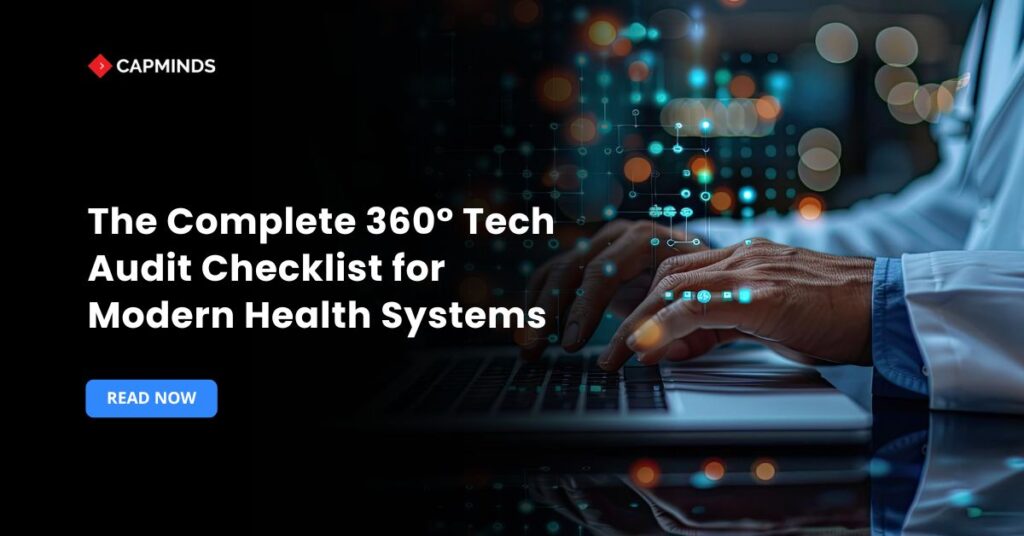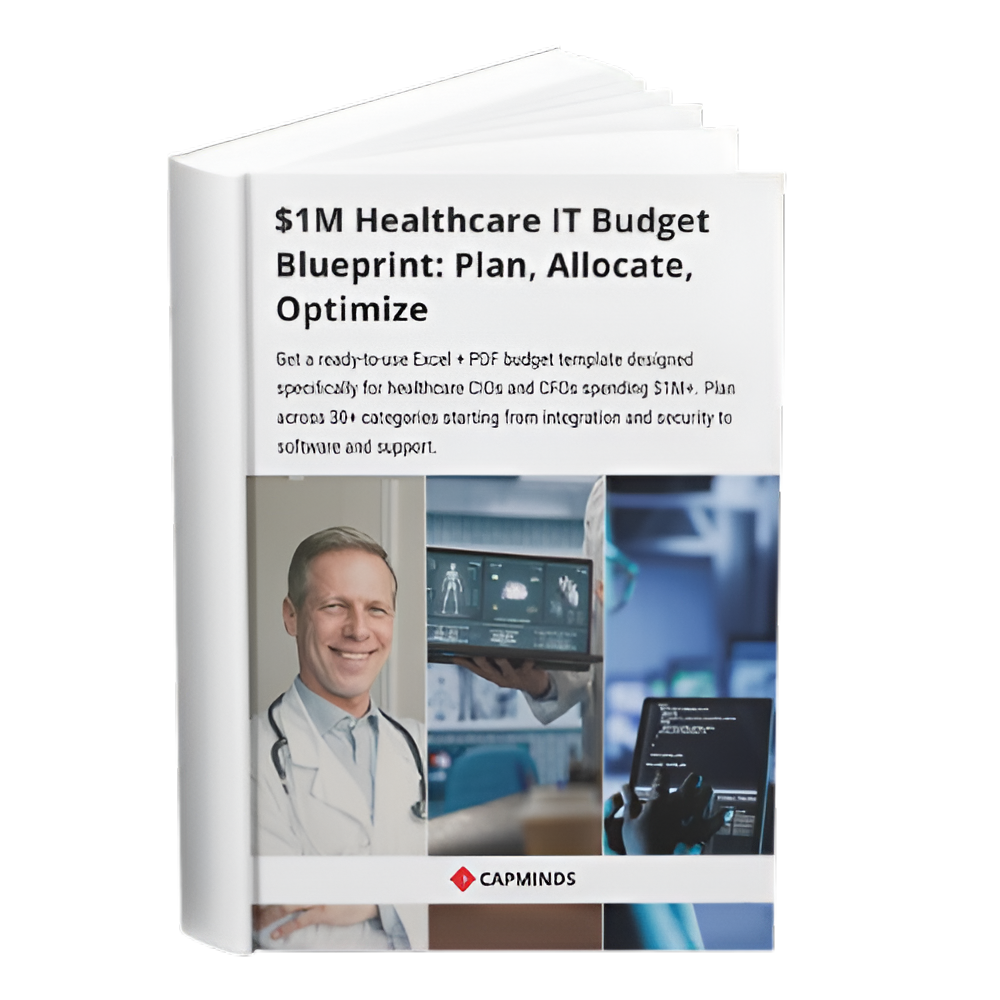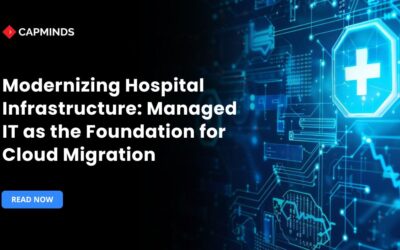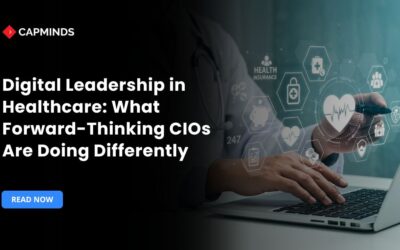The Complete 360° Tech Audit Checklist for Modern Health Systems
Digital solutions are rapidly taking over current healthcare systems. Nowadays, cloud-based data, wearable technologies, telemedicine platforms, EHR systems, and AI-powered help are all critical components of therapy delivery. However, the risks of cyber breaches and noncompliance with rules are increasing as healthcare becomes increasingly digital. Over 168 million patient records in the United States were compromised by hackers in 2023 alone.
The U.S. Department of Health & Human Services is putting up new security regulations in an effort to address these mounting worries. These include mandating that security rule implementation specifications be followed, forcing healthcare institutions to have a network map and inventory of technology assets, and setting up frequent penetration tests and vulnerability assessments.
Aging infrastructure and inadequate system integration frequently cause delays, inefficiencies, and a drop in patient satisfaction for rural health facilities. A thorough 360° technology audit is necessary to meet these difficulties. In order to find and fix areas that need improvement, this audit offers a comprehensive assessment of the financial, human, process, software, and hardware systems. This guide synthesizes recent guidance nd best‑practice checklists to create a comprehensive audit framework for modern health systems.
Why Tech Audits Are Essential
Technology audits assist in locating risks, inefficiencies, and weaknesses in an organization’s IT infrastructure. For many reasons, they are crucial to the medical field.
- Safety and quality of care: Delays in care caused by outdated systems, disjointed data, or poor usability may ultimately result in inferior quality. Technology audits assist in identifying these problems so they may be quickly fixed.
- Adherence to Regulations: Adherence to laws such as HIPAA, HITECH, and any upcoming modifications to the HIPAA Security Rule is essential. Complying with these standards necessitates risk assessments, written policies, asset inventories, vulnerability scans, and continuous monitoring. Technology audits ensure that security protocols are implemented to meet these requirements.
- Financial performance: Each instance of a data breach can cost healthcare firms more than $10 million. Technology audits can also reveal inefficiencies like redundant software or telecom billing problems, which impact roughly 80% of invoices. Resolving these problems can free up funds for investments that are more patient-focused.
- Patient experience: Inadequate technology in remote places may lead to disconnected service and long wait times. Technology audits examine each stage of the patient journey, looking for methods to improve communication, scheduling, and accessibility.
Related: What Should Be in Your 2025 Health IT Security Audit Checklist
1. Governance & Strategy
The first step in a 360° audit is governance. This guarantees that the audit is in line with both legal and organizational objectives.
| Step | Purpose |
| Define objectives & scope | Clarify why the audit is being performed and what functions (e.g., EHR, telehealth, networks, finance) it will cover. A well‑defined scope prevents “scope creep” and cost overruns. |
| Assemble a cross‑functional team | Incorporate stakeholders from IT, clinical, compliance, financial, and patient experience. The digital transformation checklist from Formstack suggests assembling a cross-functional team and conducting a comprehensive audit of the current procedure. |
| Create asset inventory & network map | The 2024 HIPAA NPRM proposes requiring a technology asset inventory and network map that shows how electronic protected health information (ePHI) flows across systems. Update this at least annually or whenever major changes occur. |
| Adopt a risk management framework | Use NIST’s Risk Management Framework (prepare, categorize, select, implement, assess, authorize, and monitor) to guide control selection and continuous monitoring. Set risk tolerance and prioritize high‑impact systems. |
Change management and buy‑in
- Instead of attempting to overhaul everything at once, begin by focusing on a single project. Determine which procedures are the most bothersome, rank them in order of importance, and then design a detailed reform strategy.
- Next, gather support from executives and employees. Present the business case for digitization to them, emphasizing the time and cost savings, as well as the possibility of enhanced patient outcomes.
- Create a budget, assign roles, and set specific goals. Projects can rapidly spiral out of control without a detailed statement of work, resulting in delays and schedule interruptions.
2. Infrastructure & Hardware
A robust infrastructure underpins every digital health initiative. Both on-premises assets and cloud environments should be covered by the auditing infrastructure.
- Conduct a thorough audit of the infrastructure: Analyze licensing costs, bandwidth constraints, and data center utilization. Identify outdated hardware and plan replacement cycles to minimize downtime. CDW’s health IT infrastructure checklist advises organizations to strategize first, rationalize applications, reduce technical debt, and improve integration.
- Adopt hybrid architectures: For some health systems, a hybrid model, keeping mission‑critical databases on‑prem for latency while moving analytics and backups to cloud platforms, reduces maintenance costs and enables telehealth.
- Ensure redundancy and disaster recovery: Design backup and disaster‑recovery policies that meet HIPAA and internal service‑level agreements. The HIPAA NPRM proposes that regulated entities be able to restore electronic information systems within 72 hours and perform a criticality analysis.
- Network segmentation & configuration: The proposed Security Rule requires network segmentation and standardized configuration controls to disable unnecessary ports and remove extraneous software. Segmentation limits the blast radius of an incident.
- Asset lifecycle management: Maintain inventories for servers, workstations, mobile devices, network equipment, and Internet‑of‑Medical‑Things devices. Replace unsupported operating systems and retire devices securely.
Related: 5 Hidden Costs of Aging Health IT Infrastructure
3. Security & Compliance
Security remains the cornerstone of any tech audit. Recent guidance emphasises making all Security‑Rule specifications mandatory and adding explicit requirements for encryption and multi‑factor authentication.
Risk assessments & management
- Conduct annual risk assessments (or more often if systems change). Risk analysis must be “accurate and thorough” in accordance with the HIPAA Security Rule. Prioritize fixing existing vulnerabilities, such as unencrypted laptops or unsupported operating systems.
- Keep a risk record that connects dangers (including ransomware, insider abuse, and natural disasters) to duties and mitigation strategies. Written evaluations that examine the asset inventory, pinpoint threats and weaknesses, and allocate risk levels are mandated under the NPRM.
Access control
- Make sure that patient information and vital systems are only accessible by authorized individuals. Every user should have a distinct login and only be granted the bare minimum of permissions.
- Set up automated session timeouts to stop records from being seen by unauthorized users when a workstation is left unattended.
- As mandated by the NPRM, multi-factor authentication should be implemented across all platforms.
Data encryption
- Encrypt both in-transit and at-rest data. If a device is lost or stolen, encryption safeguards data on servers, backups, and laptops. HIPAA’s proposed update makes encryption mandatory with limited exceptions.
Incident response & recovery
- Create and record an incident response plan that outlines the detection, reporting, and remediation of incidents. It should also contain escalation channels and communication protocols. Test the plan frequently and revise it in light of new information.
- Keep track of audit logs and observations. To prevent inappropriate behavior, identify suspicious activity, and assist with forensic investigations, keep track of user actions and system events.
Business associate agreements (BAAs)
- Verify that BAAs have been signed by all vendors handling ePHI. Legally, BAAs mandate that vendors maintain HIPAA compliance and safeguard data. Review vendor certifications and compliance on a regular basis.
Vulnerability scanning & penetration testing
- Plan penetration tests (ethical hacking) and vulnerability scans (automatic scanning tools) for at least twice and once a year, respectively. The proposed HIPAA update suggests scanning every six months and penetration testing annually
4. Data Governance & Interoperability
Only when data maintains its integrity and flows smoothly is it valuable. Many hospitals still operate in gaps, with radiology data in one system, lab results in another. A tech audit should:
- Make a list of all the data sources and data flows first. Locate each system that sends or stores electronic Protected Health Information (ePHI) using a network map. Make sure to record these systems’ interfaces, data formats, and transfer protocols.
- Evaluate interoperability next. Check if standard APIs like HL7 or FHIR are supported by systems, including EHR, imaging, billing, and analytics platforms. FHIR-based middleware and APIs are frequently created by healthcare IT consultants to close the gap between outdated platforms and contemporary systems.
- Use a patient matching approach or a master patient index to get rid of duplicate records. This lessens the possibility of duplicate charts, which can lead to medical and billing issues.
- By establishing precise data-quality indicators, you can guarantee data governance and quality. To supervise the procedure and carry out validation rules, designate data stewards. Use access controls, hashing, and encryption to safeguard the integrity of your data.
- Lastly, make analytics a priority. Clean, aggregated data is necessary for modern analytics. Adopt secure cloud-based analytics tools, like the hybrid architectures already discussed, and move toward a consolidated data warehouse.
5. Telehealth & Digital Front Door
Although telehealth was essential during the epidemic and will always be a part of healthcare delivery, it comes with additional billing and regulatory challenges. A telehealth audit should include:
- Verify payer coverage: Ensure each telehealth service is covered by Medicare or commercial payers. Medicare publishes a list of payable services. Create a payer grid showing place‑of‑service codes, modifiers, and documentation requirements.
- Make use of HIPAA-compliant systems: Using a platform that secures patient data is prudent practice, even if payers temporarily loosen their technological requirements. Create a telemedicine cybersecurity strategy.
- Properly document interactions: Note the patient’s consent, the patient and clinician’s locations, the length of the session, the clinical conversation, the risk level, the communication medium (audio vs. video), and the tests that were requested. Specific CPT codes apply when audio‑only is used.
- Monitor denials: Track claim denials related to telehealth. Changing payer rules may be revealed first through denials.
- Integrate telehealth with EHR: To keep an accurate record and minimize manual data entry, make sure telehealth encounters are fed into the scheduling and EHR systems.
6. Software Portfolio & Application Rationalization
Most health systems accumulate a patchwork of applications over the years, including clinical, administrative, financial, and research tools. A software audit should:
- Inventory all applications and identify redundancies. CDW advises that each application needs a roadmap for upgrades and lifecycle planning.
- Examine the cost and licensing: Find any overlapping functionality or licenses that are not being used. Support is made simpler, and overhead is decreased by consolidating tools.
- Assess usability and integration: The DHI article stresses user‑experience analysis and software review to understand how effectively clinicians use technology. Poor usability leads to frustration and workarounds; integrated tools streamline workflows and improve patient care.
- Convert non-clinical systems to cloud-first apps: One example consultancy kept mission-critical databases on-premises while migrating scheduling, payroll, and human resources to cloud alternatives.
- Arrange for decommissioning and upgrades: Standardize on interoperable platforms and replace unsupported software to lower technological debt.
7. Cloud & Vendor Management
Cloud services and external vendors are now ubiquitous. An audit must ensure that they do not introduce security holes.
- Enumerate all cloud providers and services that manage ePHI, and assess their security certifications (such as ISO 27001, SOC 2, and HITRUST). Making a thorough list and verifying that every service encrypts data both in transit and at rest.
- Examine the BAAs: Verify that contracts stipulate that vendors must abide by HITECH, HIPAA, and any state laws that may be relevant.
- Evaluate configurations: Make sure that public buckets are not exposed, ports are locked, identity-access management is implemented, and cloud services are configured correctly. The NPRM requires multi‑factor authentication and configuration controls for workstations and servers.
- Monitor vendor compliance: Require vendors to provide periodic security reports or assessments. The proposed rule suggests that business associates verify annually that they have deployed required safeguards.
8. Device & Endpoint Management
Endpoints, from desktops and laptops to IoMT devices, are common entry points for attackers.
- Inventory all devices and categorize them by function and sensitivity. About half of connected medical devices in healthcare settings are unmanaged, making inventory critical.
- Make sure that every gadget is encrypted, particularly those that are portable. To keep systems safe, perform firmware upgrades and security patches regularly. There can be serious security hazards associated with obsolete software.
- All devices should have auto-lock enabled so that it will activate after a short time of inactivity. To remotely remove data from any lost or stolen devices, use mobile device management software.
- Limit authorized devices’ access to the network. Select reliable suppliers and keep an eye out for any illegal devices trying to connect.
- Change the default passwords for clinical equipment and Internet of Medical Things (IoMT) devices, and isolate them from the main network. Update their software to minimize vulnerabilities. Cyberattacks frequently target unprotected IoT devices.
9. Workforce Training & Culture
People are often the weakest link in cybersecurity. A continuous training program turns staff into the first line of defense.
- All employees who access ePHI must receive security awareness training, per HIPAA regulations. Phishing detection, password hygiene, managing patient records appropriately, and rules against installing unauthorized software should all be covered in training.
- Make training ongoing: Security is kept at the forefront with simulated phishing exercises, annual refreshers, and brief monthly advice.
- Record training exercises: To prove compliance, keep track of attendance and content.
- Establish an accountable culture: Encourage employees to report near-misses and questionable conduct. Acknowledge and honor safe conduct.
10. Patient Experience & User‑Experience Audit
Instead of creating obstacles, technology could enhance patient engagement and expedite clinical workflows.
- Evaluate the patient journey first. Technology audits assist in identifying areas in rural areas where antiquated systems lead to irritation and delays. Schedule, check-in, telehealth, portal access, and billing are examples of digital touchpoints that should be mapped out. To find areas that need improvement, track patient satisfaction, and wait times.
- Next, assess your software’s usability. To find out how staff members and clinicians use telehealth platforms and EHRs, do a user-experience analysis. Errors are more likely to occur, and physician burnout can result from poor usability.
- Invest in technology that is focused on the patient. Wearables, integrated portals, and smart beds are a few examples of tools that can improve patient monitoring while lessening the physical labor required by staff members. To get the most out of these technologies, make sure they are properly linked with your main systems.
- Utilize digital feedback tools and questionnaires like HCAHPS to track patient satisfaction. This will enable you to monitor how advancements in technology affect patient perceptions.
- Lastly, talk about digital accessibility. Ensure that telehealth apps and patient portals are accessible to those with disabilities by providing features like numerous language options and screen-reader compatibility.
11. Digital Transformation & Continuous Improvement
Technology audits are not a one‑time exercise; they fuel ongoing digital transformation. Formstack’s digital transformation checklist provides a step‑by‑step approach:
- Pick the project: Start with a high‑impact workflow that is inefficient or paper‑based.
- Gather buy‑in: Demonstrate ROI to administrators and staff by outlining time savings, cost reductions, and patient‑care improvements.
- Get started: Form a cross‑functional team, audit the current process, and develop a strategy with goals, timeline, and budget.
- Select technology: List must‑have and nice‑to‑have features (e.g., EHR integration, open APIs). Test solutions with users for usability.
- Perfect communications: Document the basics (who, what, when, where, why), set regular check‑ins, and communicate progress across departments.
- Launch smoothly: Test new tools and workflows, document them clearly, and designate a point person for questions.
- Track progress: Report on adoption, gather feedback, and adjust. Use surveys and open meetings to collect suggestions.
- Reflect and iterate: Debrief on what worked and what didn’t. Compare results to goals and plan the next step.
12. Financial & Revenue Cycle Considerations
Technology audits should include financial systems and billing processes.
- Verify telehealth billing: Use a payer grid to ensure correct place‑of‑service codes, modifiers, and CPT codes. Document the method of communication and patient/clinician locations.
- Monitor denials: Denials may signal changing payer rules. Track denial reasons, educate coders, and update billing systems.
- Audit telecom and IT bills: Telecom audits reveal duplicate charges; Gartner estimates that 80 % of telecom bills contain errors. Recovering these costs frees funds for technology upgrades.
- Plan budgets for modernization: Use audit findings to justify capital expenditures for infrastructure upgrades, security tools, and training. Quantify cost savings from reduced downtime and improved patient retention.
Related: How to Evaluate and Shortlist Health IT Vendors in 2025
Expert Digital Health Tech Services for Your Health System
At CapMinds, we specialize in providing comprehensive digital health tech services to modernize and streamline your health system. Our services are designed to enhance efficiency, ensure compliance, and improve patient outcomes.
With our 360° tech audit and consulting services, we help healthcare organizations optimize their IT infrastructure, address cybersecurity concerns, and stay ahead of evolving regulations.
Our key offerings include:
- Tailored strategies for system integration, cloud migration, and data governance.
- In-depth assessments to identify vulnerabilities, inefficiencies, and compliance gaps.
- Risk assessments, vulnerability testing, and HIPAA compliance solutions.
- Optimizing your tech stack to drive continuous improvement in care delivery and patient satisfaction.
Take your health system to the next level with our expert services.
Contact us today for a free consultation and let CapMinds guide your digital transformation journey!




